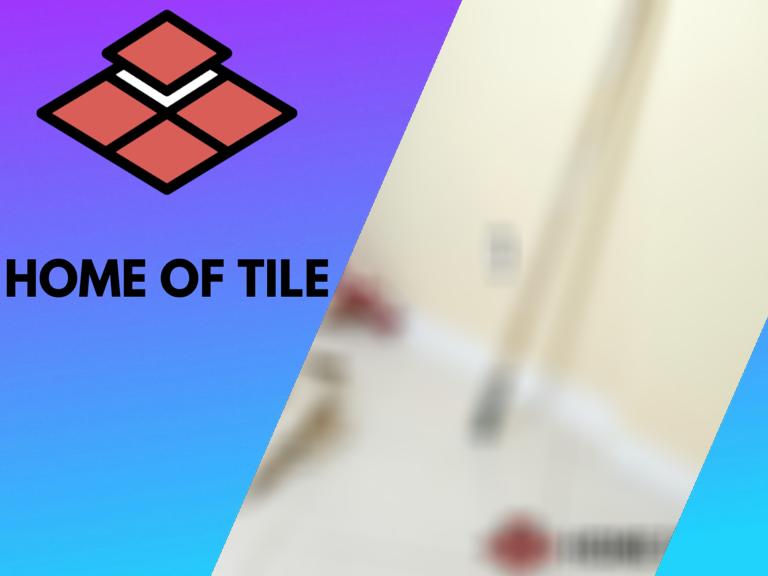How To Choose a Grout Color. What professionals say
Installing tile can be one of the most transformative elements you can add to your space. What most people end up forgetting is that the color of grout used between the tiles can make just as big of a difference. Grout can make the same tile look in two very different ways, making it integral in the design process.
You can match your grout to the color of your tile for a neutral, subdued look. Or you may want to contrast the grout against the tile for a bold appeal. If you’re feeling creative, choosing a colorful grout is the perfect way to liven up a space.

This article will further discuss the many different design elements to consider when choosing your grout color.
Contents
Things To Consider When Choosing a Grout Color
Like any other design elements such as tile, there are a number of factors to consider when deciding on the color of your grout.
● The Size of Your Space
First and foremost, if you are to consider any one factor when choosing the color of your grout, the size of your space should be the utmost priority. The size of your area significantly impacts the color of your grout since it will decide how prominent it will be.
– Large Space
A contrasting grout color may look overwhelming and distracting in a larger space such as a kitchen. Larger rooms tend to have more impact and unless you want a statement tile wall or installation, matching your grout to the tile is the preferred option. The matching pair will make your tiles subdued and fade into the background.
– Small Space
Small spaces allow more wiggle room and a place for creativity.
There are two main options for approaching a smaller area, such as a bathroom:
- Match the grout to the tile color and create a smooth, effortless look. This seamless installation will allow your space to look larger.
- Choose a contrasting grout color for your tile to create a bold statement. This option allows for more creativity and can make your tile the centerpiece. For example, white tile with black grout will add a subway-esque look to the space.
● Patterns and Designs
Is your tile textured? Or is it a timeless marbled look? Considering these questions can have the most significant impact on which grout color you opt for.
If your tile is patterned, a neutral or matching shade of grout will allow the tile’s pattern to shine. Whereas if you have a plain tile, using the color of the grout to get creative will allow for a more eccentric look. White tiles tend to be the most versatile, allowing for the use of any grout color even bright pops of color to add personality to the room.
● Tile Placement
Just as the size of the space impacts color, so does the tile placement. If your tile is placed on the floor, a more neutral shade of grout will allow for the most seamless, camouflage look. But if you’re planning for a statement tiled wall, a colored grout may help you best reflect your funky energy.
● Surrounding Design Elements
Be sure to keep in mind any other interior design elements in the space where you are placing your tiles. If you have a statement wallpaper, a colorful grout may look messy. On the other hand, try to bring colors from the surrounding elements into the grout for a unique but put-together look.
Grout Styles for Different Effects
Now that you know the fundamental factors to keep when choosing a color for your grout, let’s talk about some fun effects different shade choices provide.
● Contrasting Grout to Tile
One of the best ways to incorporate patterns into a smaller space with tile is to utilize the concept of contrast. Adding a grout that goes against the color or saturation of your tile allows for a natural pattern to encompass the tiled wall.
For example, adding white grout against your black tile will give you a vintage sketchbook aesthetic. If you opt for the opposite of Black grout against white tiles, you will be left with a trendy subway-inspired accent wall.
● Using Colorful Grout
Can you imagine adding colors like yellow or red to your kitchen or bathroom? It may sound overwhelming initially, but colorful grout is one of the easiest ways to add color and personality to your design space.
Do not worry; color does not always have to be over the top or in your face.
One option is to go for a more saturated shade of your tile color for the grout. This adds a pop of color while still making it easy on the eyes.
Or, you can take colors from the surrounding design elements and use those as your grout color. For example, a brick oven with red grout would not look crazy if there were other design elements with the same color in the space.
● Matching Grout to Tile
The safest and timeless option is matching your grout to your tile. Had you not known about other ways to use color to design your tile space, this would have been your default option.
– Option One
If you are unsure of what design elements you want to add to your space, matching grout to tile is the safest bet. You can go matchy-matchy and use the same shade as your tile color as your grout color. This will then create the most versatile background for you to further design and plan your space.
– Option Two
Suppose you want a neutral grout but not the same shade. In that case, try opting for a versatile gray, beige, white, or black grout color. Beige and gray not only coordinate with a variety of styles and colors but they also happen to be the easiest grout colors to clean and maintain.
The Takeaway
Grout is a design element that can elevate or liven up your space. How you choose to utilize color is up to your creative free will. Whether neutral or colorful, grout can transform your space and make it unique to your taste and aesthetic.







